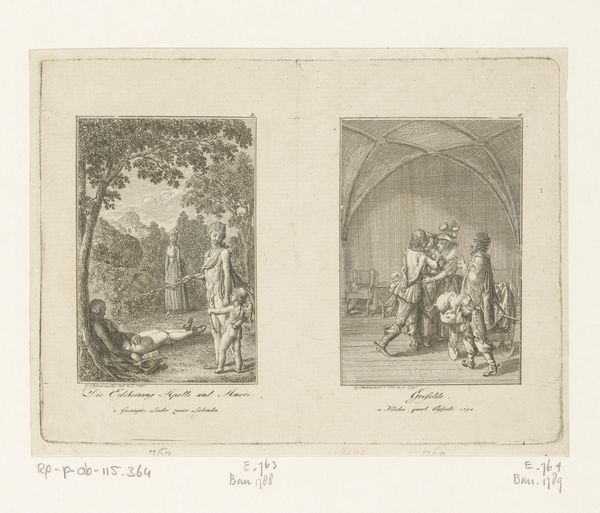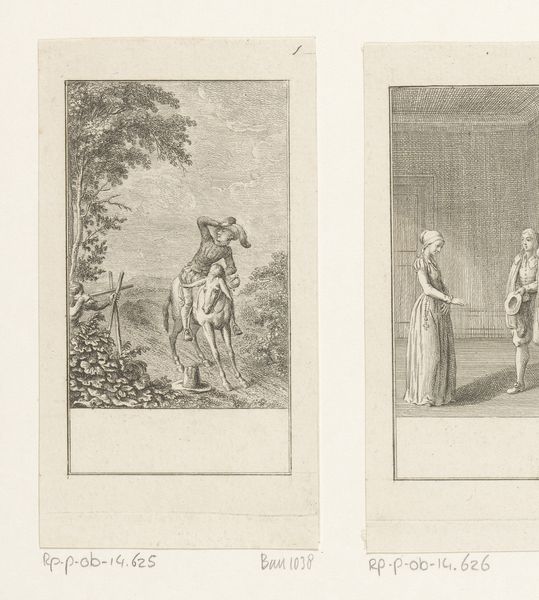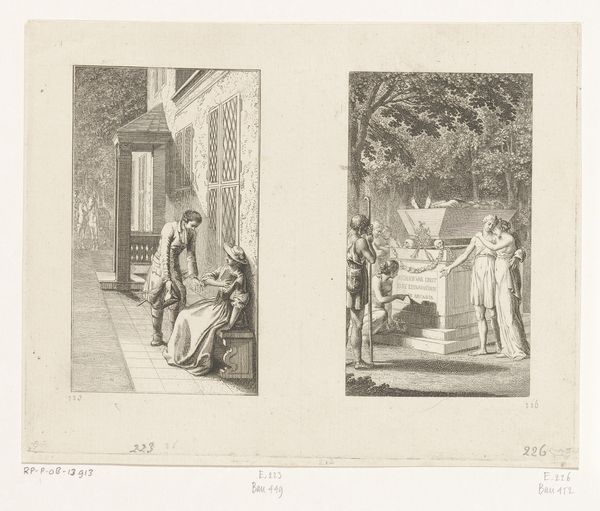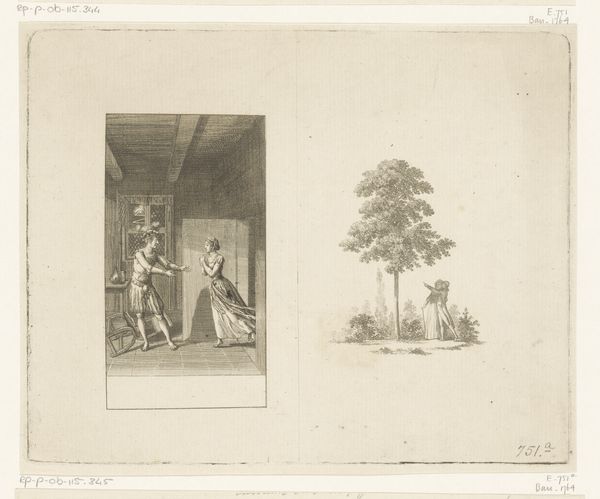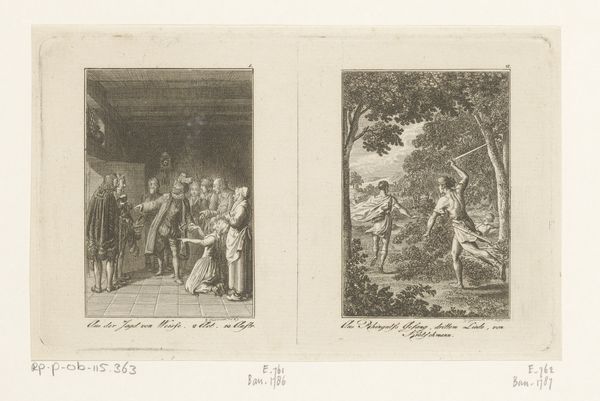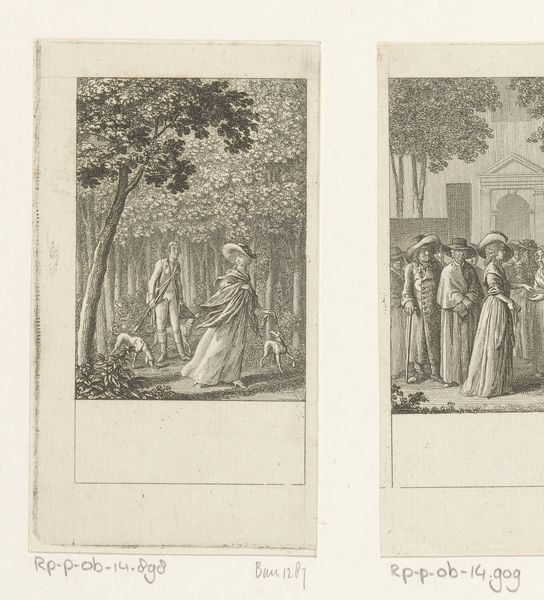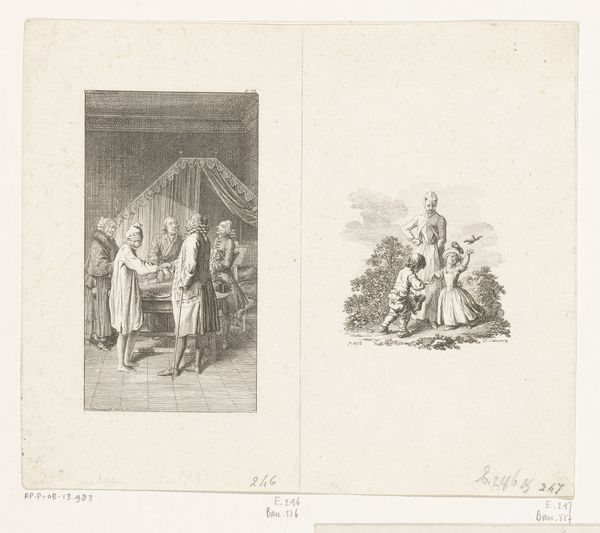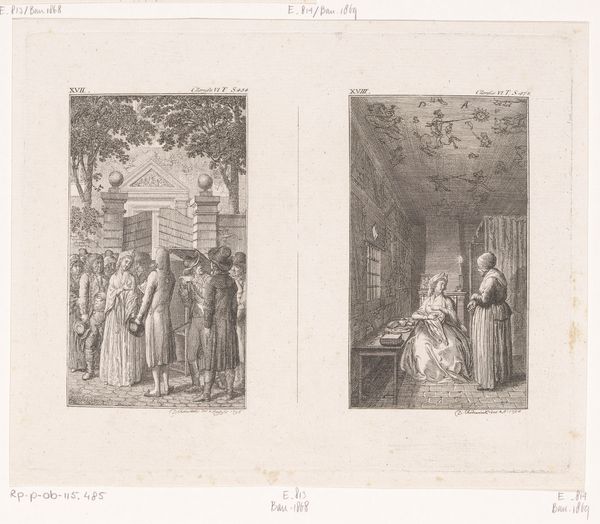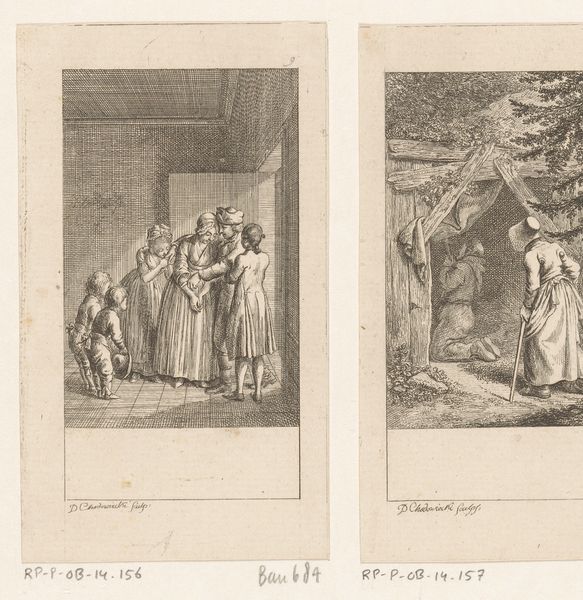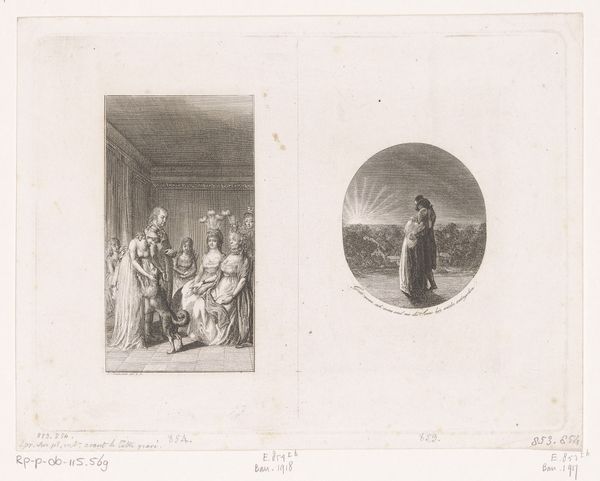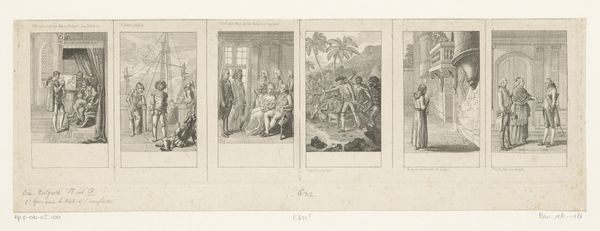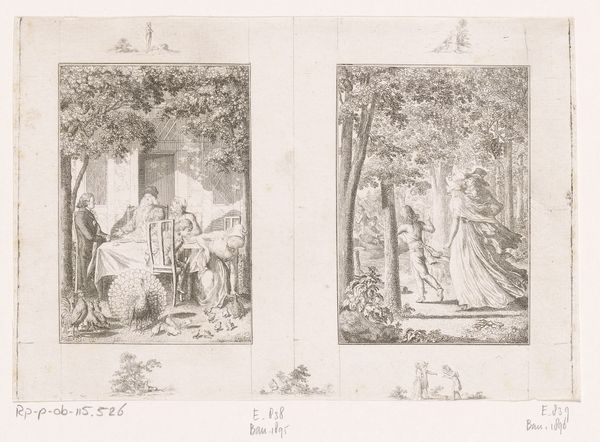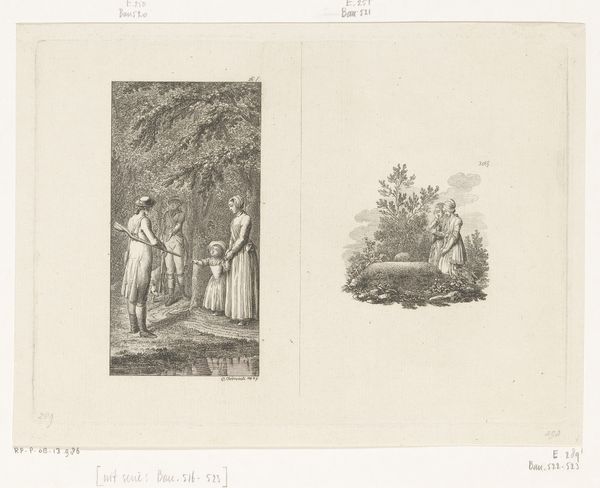
Twee voorstellingen uit Clarissa van Samuel Richardson 1795
0:00
0:00
danielnikolauschodowiecki
Rijksmuseum
drawing, print, etching, paper
#
portrait
#
drawing
#
narrative-art
#
ink paper printed
# print
#
etching
#
figuration
#
paper
#
child
#
romanticism
#
line
#
cityscape
#
genre-painting
#
miniature
Dimensions: height 146 mm, width 214 mm
Copyright: Rijks Museum: Open Domain
Editor: This is "Twee voorstellingen uit Clarissa van Samuel Richardson" created in 1795 by Daniel Nikolaus Chodowiecki. It looks to be an etching, rendered in ink on paper, currently held at the Rijksmuseum. I am struck by the clear lines and how much detail is packed into these small narrative scenes. What can you tell me about it? Curator: Given Chodowiecki’s historical context, think about how these prints were produced and consumed. Etchings like this weren't high art for an elite collector, but reproduced illustrations for a wider audience interested in accessible narratives. The line work, the printmaking process itself—consider its social implications. How do you think the method of reproduction changes our relationship with the story being told? Editor: I guess I hadn't considered it as mass media, but it sort of is, isn't it? It flattens the hierarchy between fine art and illustration, and the printing method makes it more democratic. The narrative isn't confined to the upper classes who could afford original paintings. Curator: Exactly. Think about the labor involved. The artist, the printer, the distribution network – a whole system enabling this story to circulate. How might examining these material conditions challenge our notions about Romanticism, which often focuses on individual genius and emotion? Is there any tension in this democratisation? Editor: Well, it still needed to be produced, right? Is there any historical background on Chodowiecki or this artwork that sheds light on his process and social context? Did he own his means of production? Did he need wealthy backers or supporters to realize this art? Curator: Good questions. Chodowiecki often worked independently, but understanding patronage systems of the time is key. Now think about the paper, ink, and printing press. These are commodities tied to trade and industrial development. By examining the material history, we can better understand its production and influence. Editor: So it's about tracing the life cycle of the artwork from its creation to its distribution and consumption to unearth its cultural meaning. This focus on materials and methods of reproduction brings fresh perspectives to familiar art. Curator: Indeed. It urges us to examine the labor, materiality, and social forces behind what we traditionally consider "high art."
Comments
No comments
Be the first to comment and join the conversation on the ultimate creative platform.
